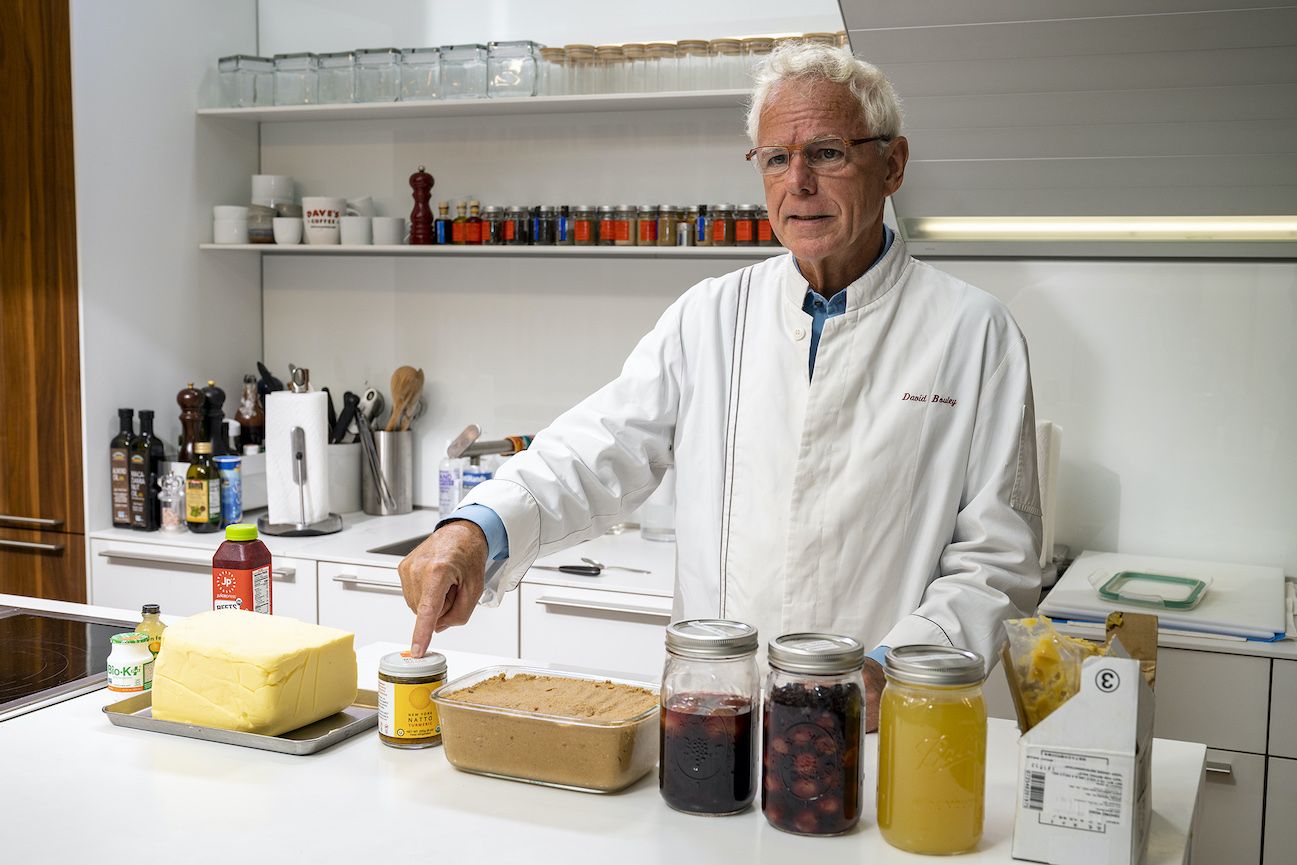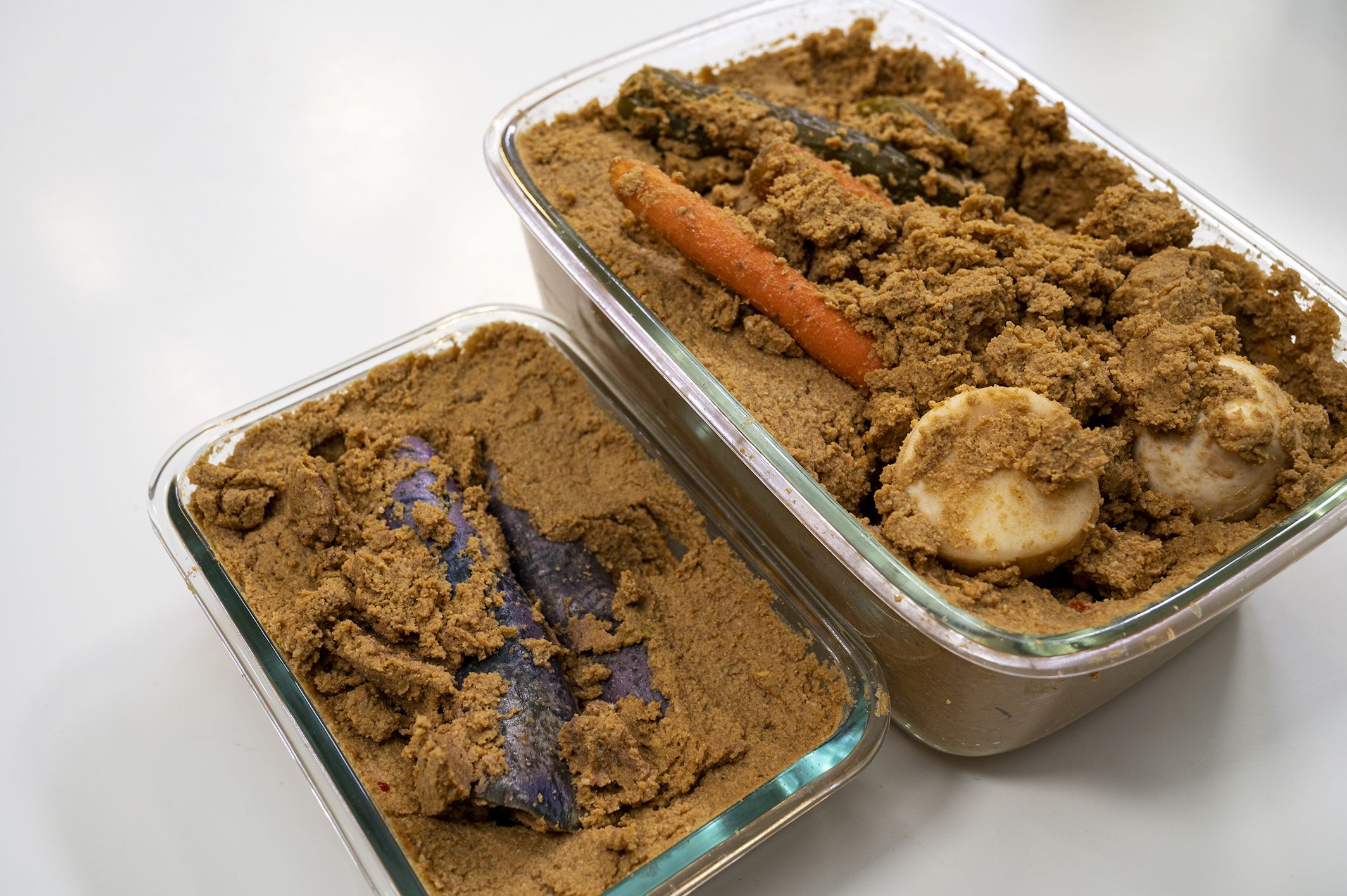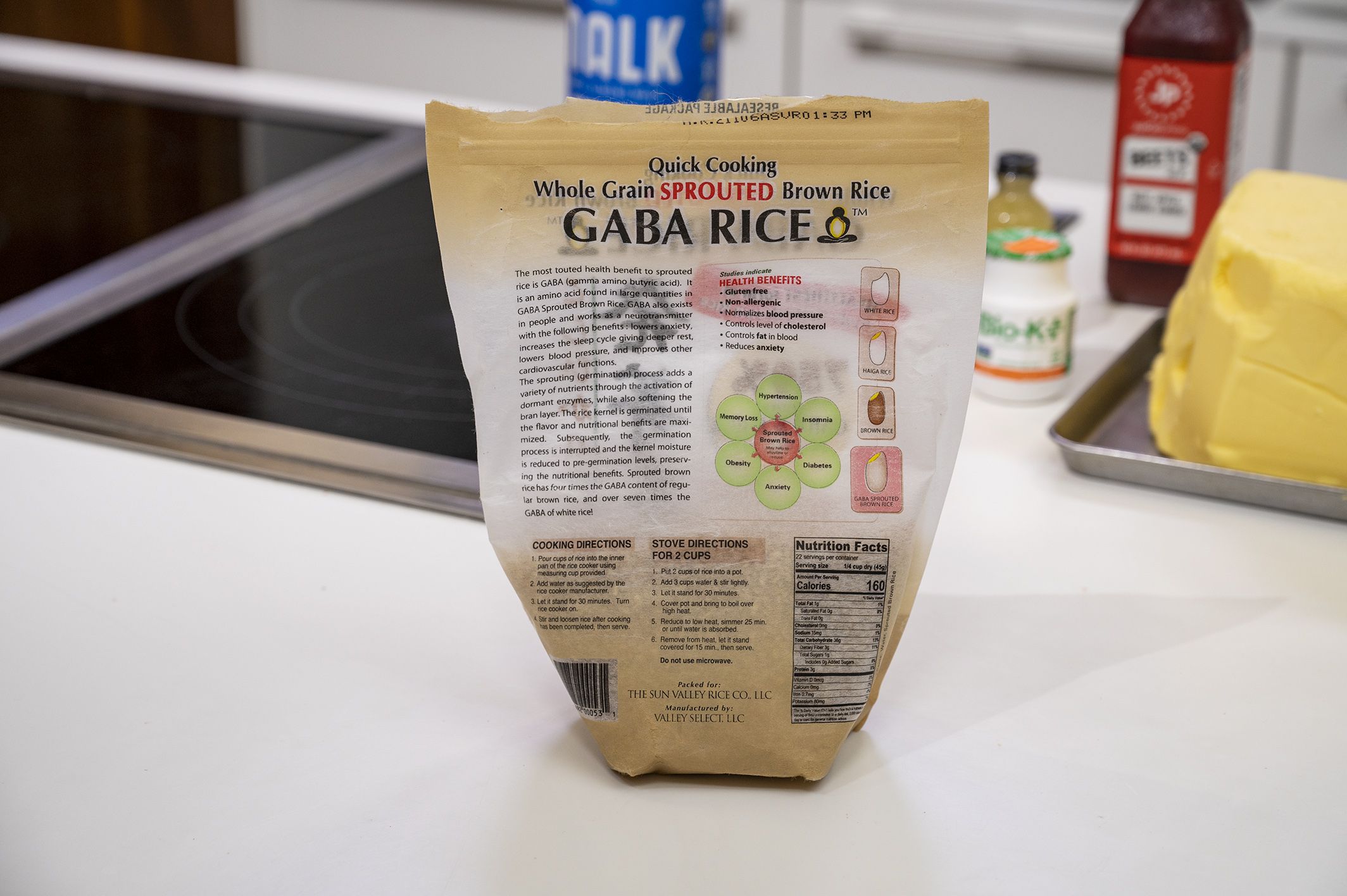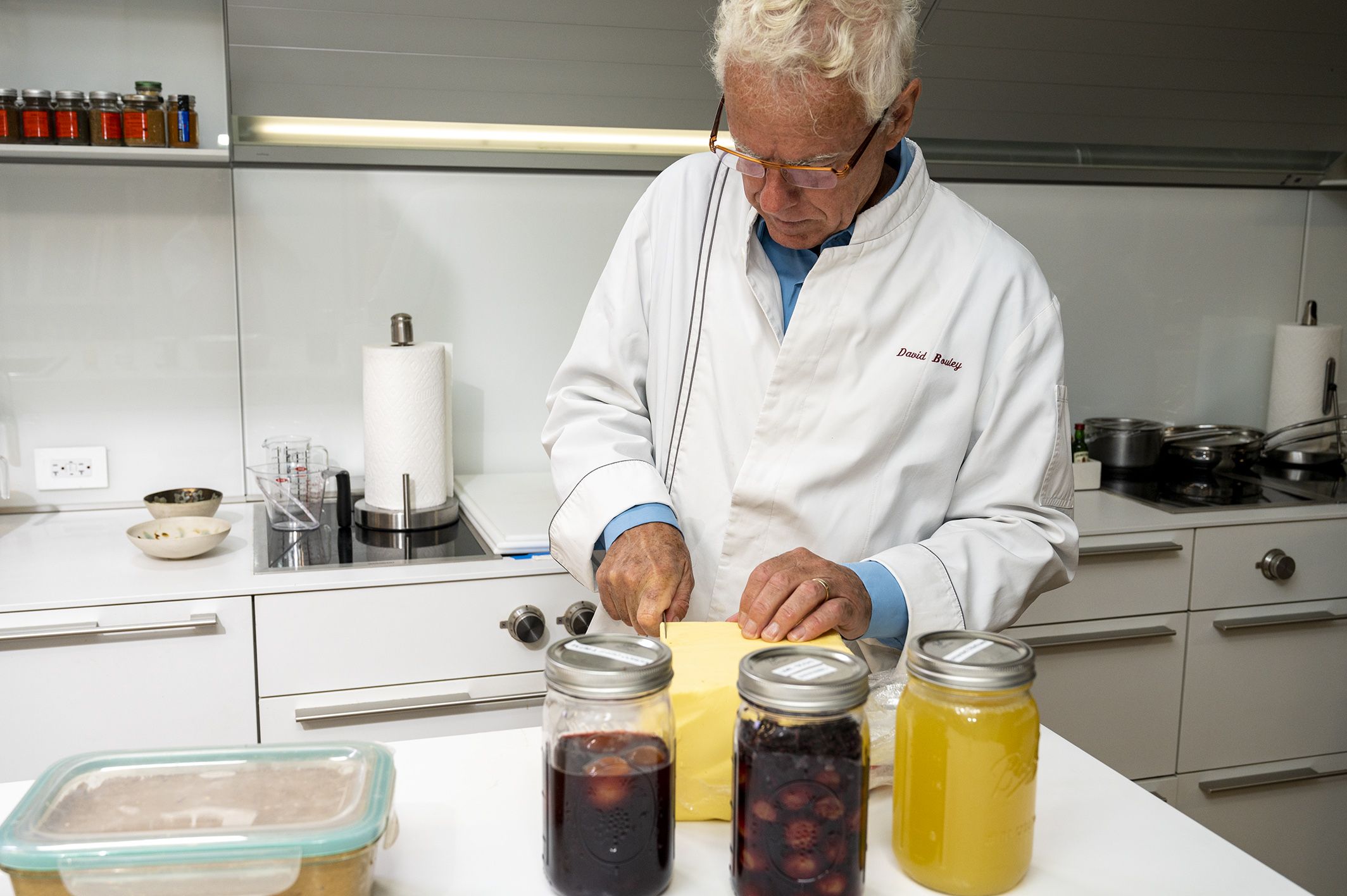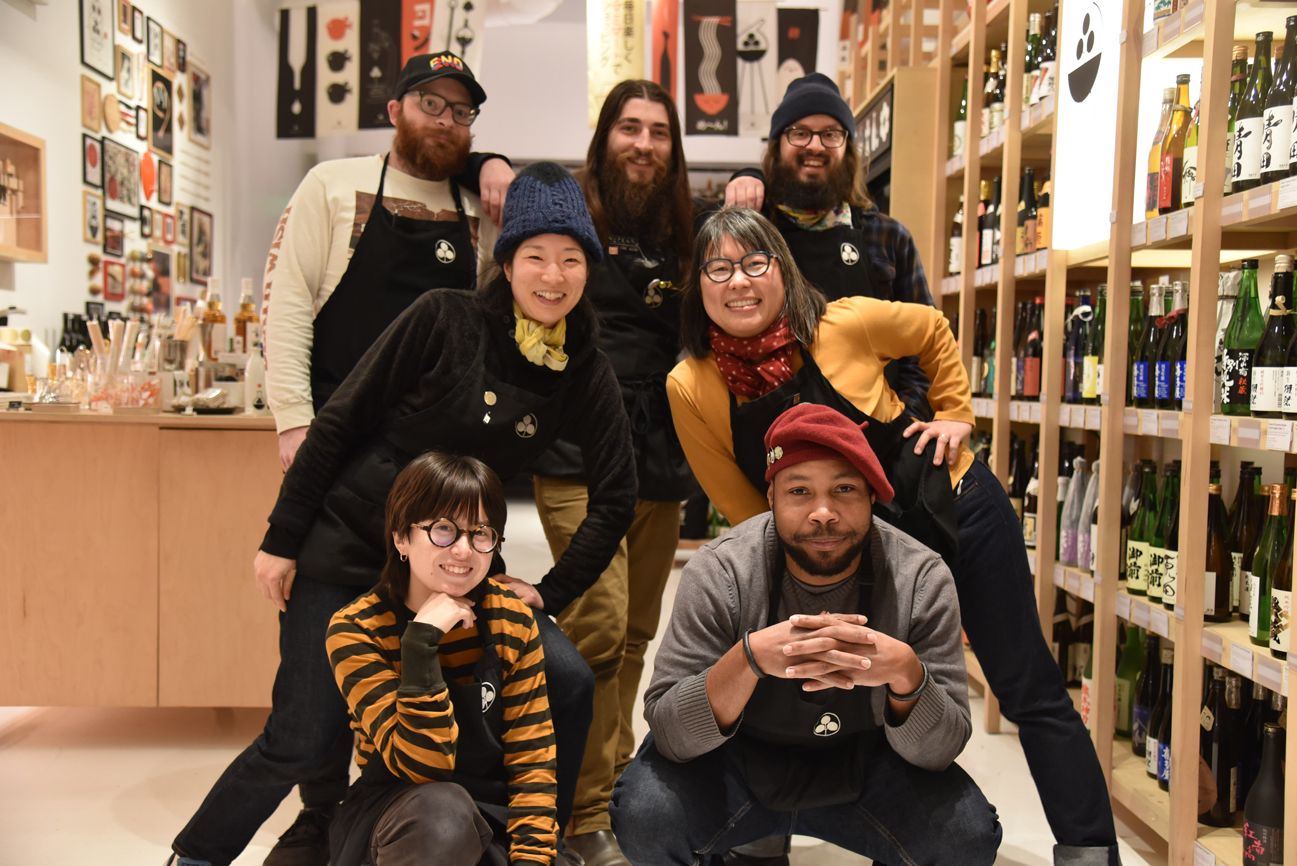
In NY, traditional Japanese fermented foods are garnering increased attention, and “fermentation” is a trending keyword for food
Kombucha, a fermented beverage effective for regulating the intestinal environment, has rapidly become popular throughout the USA in the last few years and is sold as a bottled beverage in various flavors. In New York, where homemade kombucha workshops have become high-profile, much attention is focused on fermented foods, and fermented foods unique to Japan, including natto, miso, and bran pickles, have been winning a lot of fans. Focusing on their exquisite flavor and benefits as health foods, an increasing number of star chefs are actively incorporating traditional Japanese fermented foods into their menus.
David Bouley (https://davidbouley.com/) is widely known around the world as a Michelin-starred chef. Bouley fascinates many gourmets with his creative “Bouley magic” cuisine, having mastered the art of gastronomy as a top-level chef while at the same time pursuing the interrelationship between food and health from the chef’s perspective, making him a pioneering voice in all kinds of endeavors. Having been a Japanese Cuisine Goodwill Ambassador since 2016 and enjoying excellent relationships with Japanese chefs, Bouley has visited Japan many times, has a deep knowledge of Japanese ingredients and cooking methods, and is known for actively incorporating these into his menus. This time, we visited his new TriBeCa kitchen studio, which underpins Bouley's new project on the science of food and health, and asked him about fermented foods—a growing trend in the United States.
From the chef's personal refrigerator, he takes out large chunks of butter, pickled plums, pickles, and fermented foods such as natto and miso.
“This is fermented butter made in France. It's quite hard to find in American supermarkets, but needless to say, the difference in taste produced by fermentation is remarkable. Using homemade salted rice bran, I experiment with pickling various ingredients, including classic vegetables such as cucumbers and carrots, without being constrained by conventional wisdom. Not only the Japanese but also Westerners used to eat more fermented foods every day, but with the rise of convenient instant ingredients and so on, our intake of fermented foods is steadily decreasing these days.”
Bouley has long explored ingredients and recipes around the world, eventually shifting his focus to the relationship between food and health. For the last 12 years, he has hosted a regular event called The Chef and The Doctor, inviting medical specialists to symposiums held in pursuit of common ground between medicine and food. The event has gained wide coverage in diverse media and has become a hot topic among New York foodies.
“I started this symposium due to my belief that high-quality food (which does not necessarily mean expensive food) can prevent and even heal various problems that occur in the human body. I thought professional chefs could serve as a bridge between scientifically knowledgeable doctors and end consumers to ensure that ingredients beneficial to our bodies could be incorporated into our diet in delicious ways.”
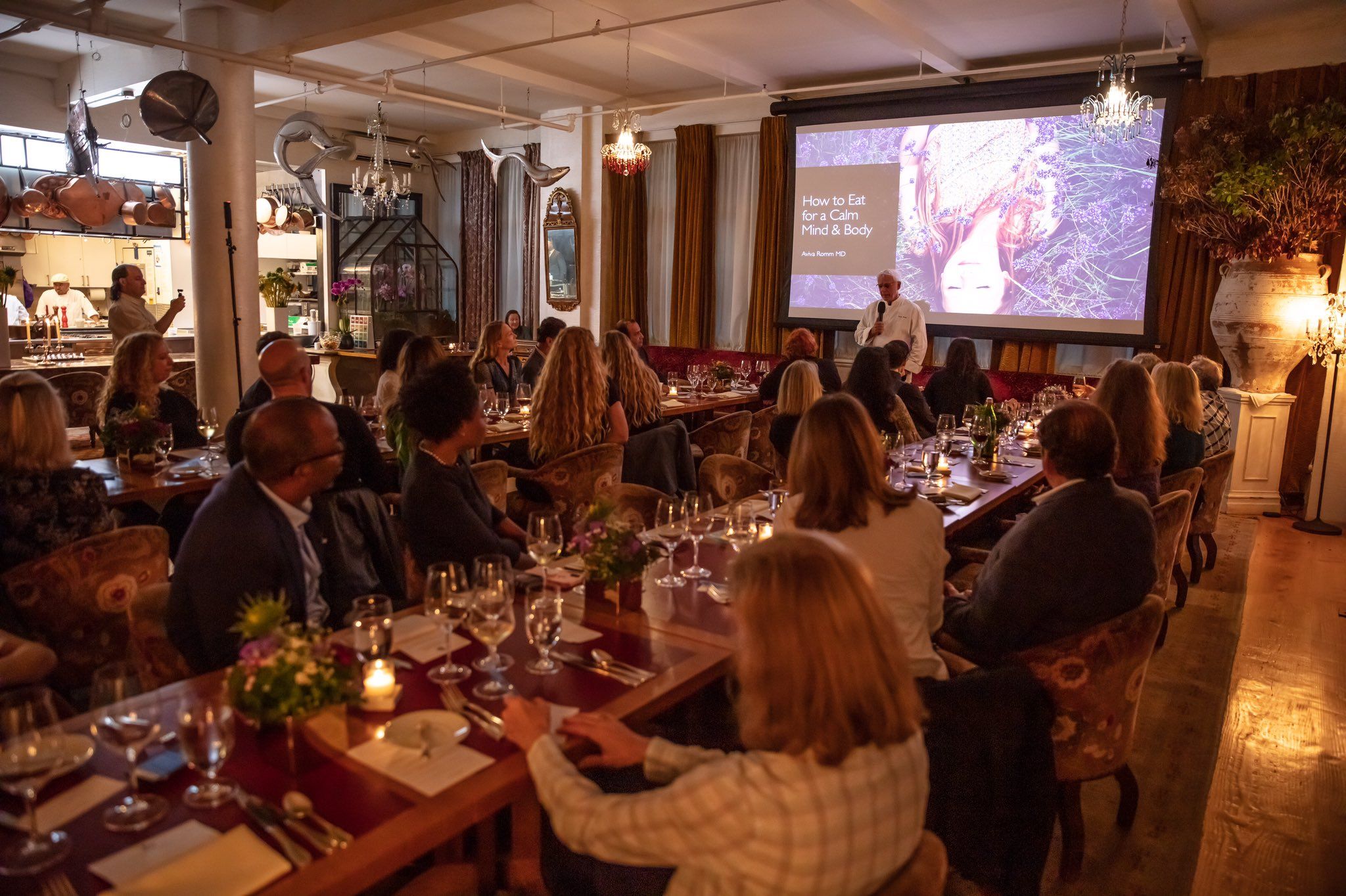
A symposium on fermentation held in 2019. All kinds of people such as doctors and cooks participated, and it was greatly talked about.
At these symposiums, there has been strong interest in Japanese fermented foods, as well as enthusiastic presentation of ways to incorporate natto, miso, and bran pickles into our daily diets in clever and delicious ways.
"Bacteria produced by fermenting foodstuffs not only help us maintain a good balance of intestinal bacteria and improve intestinal function, but also work to activate cells and prevent the invasion of pathogens. A lot of bacteria are vulnerable to heat and acid and thus never reach the intestines, but natto bacteria have the excellent feature of being resistant to heat and reaching the intestines quite easily. For most Westerners, natto is an unknown ingredient. Many people are just not comfortable with the stringy texture or smell, so I introduce natto through more accessible cooking methods, such as making it into fried rice.

David Bouley and Ann Yonetani, who is involved with natto manufacturer Nyrture New York Natto
Ann Yonetani, a close friend of Bouley who also appears at his fermentation symposiums, is a scientist with a PhD in microbiology from Columbia University who at the same time has earned unique recognition as an artisanal natto producer. In 2015, she started making her own natto based in Brooklyn, launching the natto brand NYrture New York Natto (www.nyrture.com). As a Japanese-American hailing from Philadelphia, Ann ate natto as a matter of course from an early age. After learning authentic techniques for making natto in Japan, she started selling her own made-by-hand natto in New York, creating a strong impression not only among Japanese-Americans, but also among others less familiar with natto. Now, her company sells natto nationwide (all 50 states) and 90% of customers are non-Japanese from diverse cultural backgrounds. NYrture’s website and Instagram not only educate on the effective functions of natto, but also present all kinds of recipes that use natto (natto on pizza and pancakes!).

Various types of natto, including black bean natto, turmeric natto, and organic natto. ©nyrture

Image from NYrture’s Instagram, where various natto recipes are presented. ©nyrture
With the boom in fermented foods, Japan’s traditional fermented foods are gaining more attention. Increasingly, miso and salted rice malt can be found in the health food sections of Manhattan supermarkets, and recipes using Japanese fermented foods are presented on dedicated cooking websites. Although once believed unpalatable to non-Japanese, even those who enjoy Japanese food, natto has come to be generally recognized for its outstanding nutritional value and is now one of the most popular superfoods.
On the Japanese dining table, an array of fermented foods including miso soup, natto, and pickled vegetables can be found every day. However, even among the Japanese, only a minority eat traditional fermented foods in full awareness of their amazing capabilities. Bouley’s new studio is located in TriBeCa, New York, Bouley at Home Living Pantry, is planning new projects such as private dining parties, lectures, podcast streaming, and book publishing, and is dedicated to continuing Bouley’s exploration of our journeys with food.
Text by Junko Takaku / Photography by Masahiro Noguchi

